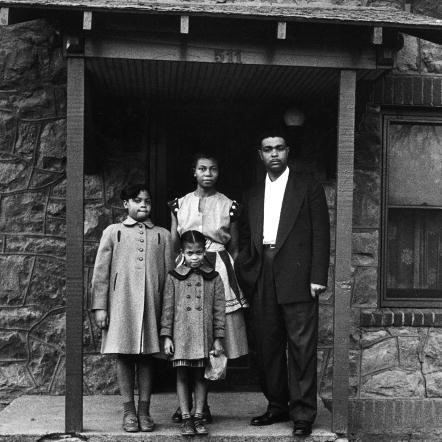May, 1954 – Brown v. Board of Education
| When, in 1951, the Sumner School in Topeka, Kansas refuses to admit 9-year-old Linda Brown because she is black, it unknowingly sets the stage for the Supreme Court ruling that would mandate desegregation of all public schools, push segregation and Jim Crow into the public eye and fuel what would become a decades-long civil rights movement. Brown’s case is one of several class action lawsuits brought to the Supreme Court by the NAACP on behalf of black schoolchildren. The Court holds, unanimously, that racial segregation in public schools violates a clause of the Fourteenth Amendment that prohibits a state from denying anyone under its jurisdiction equal protection under the law. It overturns Plessy v. Ferguson, an 1896 decision that held that segregated public facilities were legal so long as they were equal. “We conclude that, in the field of public education, the doctrine of ‘separate but equal’ has no place,” writes Chief Justice Earl Warren in the opinion of the Court. “Separate educational facilities are inherently unequal.”
Many officials in the most segregated states feel that the Court’s decision violates states’ rights, and implement only token measures to begin desegregation. Some officials are openly defiant, challenging the decision from different angles in court and passing laws to circumvent it. Integration proceeds very slowly. |
Brown v. Board of Education | Emmett Till’s Murder | The Montgomery Bus Boycott | Desegregating Southern Schools | Sit Ins | The Freedom Rides
Project “C” in Birmingham | The March on Washington | Freedom Summer | The Civil Rights Act | March from Selma to Montgomery
Malcolm X and the Rise of Black Power | The Voting Rights Act | Poor People’s Campaign | King Assassination
Project “C” in Birmingham | The March on Washington | Freedom Summer | The Civil Rights Act | March from Selma to Montgomery
Malcolm X and the Rise of Black Power | The Voting Rights Act | Poor People’s Campaign | King Assassination
Much of this text is excerpted, with permission, from the website for the American Experience series Eyes on the Prize. Read more about these events and others on that site.


